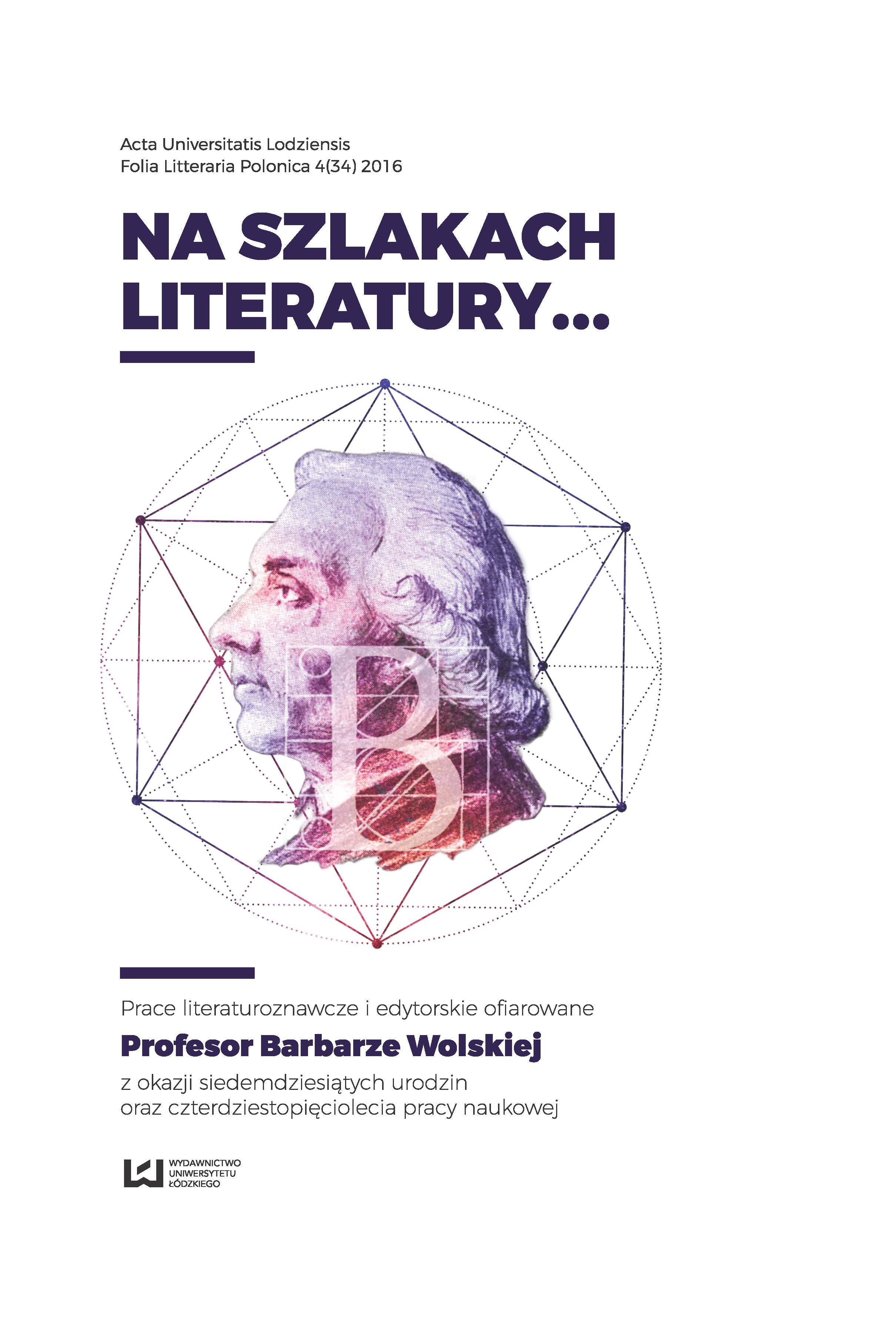Zezwierzęcenie świata ludzi. „Nosorożec” Eugène’a Ionesco
DOI:
https://doi.org/10.18778/1505-9057.34.15Słowa kluczowe:
dramat XX wieku, dramat absurdu, "Nosorożec" Eugène’a IonescoAbstrakt
The article presents the originality and the timeless meaning of the 1959 Eugène Ionesco play, Rhinoceros which is situated, despite its unambiguous ‘animal’ parable, within the Theatre of the Absurd. In the perspective of the author of the article it is not only Ionesco’s protest against fascism conditioned by the political circumstances which is significant in particular time but the work portraying mechanisms of influence on society, which appears as ‘the masses’, the whole of the society, devoid of any deeper connection with ethical and moral values of humanistic culture, common to all authoritarian ideologies. Among others, the article refers to opinions of scholars of drama and theatre critics on the evolution of Ionesco’s dramatic works and such sociological‑cultural and literary contexts as: 1) José Ortega y Gasset’s thoughts on brutal ‘direct action’ applied to the masses by force factors and on ‘fear of touch’ felt by an individual defending the values of humanistic culture, included in The Revolt of the Masses; 2) plays by Ionesco in which the theme of metamorphosis is important; 3) other works of the Theatre of the Absurd of similar meaning but using different artistic means, Samuel Beckett’s Catastrophe in particular.Pobrania
Bibliografia
Eugène Ionesco, Nosorożec, w: tegoż, Teatr, oprac. i przedmowa Marta Piwińska, t. II, Państwowy Instytut Wydawniczy, Warszawa 1967, s. 98–211.
Google Scholar
Błoński Jan, Od „Łysej śpiewaczki” do Bérengera, „Dialog” 1963, nr 3, s. 101–102.
Google Scholar
Błoński Jan, Ionesco: genealogia stereotypu, „Dialog” 1967, nr 1, s. 80–81.
Google Scholar
Brillant‑Annequin Anick, Teatr absurdu: narodziny współczesnej estetyki. Na przykładzie dramaturgii Ionesco i Becketta, tłum. Małgorzata Sugiera, „Ruch Literacki” 1995, z. 4, s. 479–488.
Google Scholar
Kosiński Jan, „Theatrum” Ionesco, „Dialog” 1963, nr 3, s. 96–98.
Google Scholar
Nyczek Tadeusz, Havel: u szczytu schodów, „Dialog” 1990, nr 11, s. 90–92.
Google Scholar
Ortega y Gasset Jose, Bunt mas i inne pisma socjologiczne, przeł. Piotr Niklewicz i Henryk Woźniakowski, wstęp Jerzy Szacki, Państwowe Wydawnictwo Naukowe, Warszawa 1982.
Google Scholar
Riewzina Olga, Riewzin Izaak, Ionesco jako eksperyment semiotyczny, przeł. Jerzy Faryno, „Dialog” 1973, nr 3, s. 74–78.
Google Scholar
Sugiera Małgorzata, Dramaturgia Sławomira Mrożka, Universitas, Kraków 1996.
Google Scholar
Pobrania
Opublikowane
Jak cytować
Licencja

Utwór dostępny jest na licencji Creative Commons Uznanie autorstwa – Użycie niekomercyjne – Bez utworów zależnych 4.0 Międzynarodowe.











